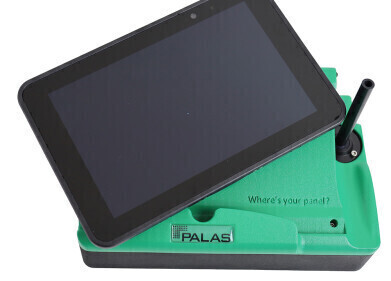Indoor air quality monitoring (IAQ)
New VOC sensor for indoor air quality applications is now available worldwide
Sep 02 2020
Sensirion presents their new SGP40 VOC (volatile organic compound) sensor for indoor air quality applications such as automated air quality control systems (air purifiers, kitchen hoods, demand-controlled ventilation systems, etc.) and air quality monitoring.
Good air quality in our living and working environments is becoming increasingly important because most people nowadays spend 90 % of their time indoors. VOCs are one of the main contributors to bad air quality, and awareness of them among individuals and governments has been increasing. Modern building materials and methods result in better insulation, and thus improved energy efficiency, but they also limit air exchange with the outside world and hence lead to higher VOC concentrations indoors. Exposure to high and/or hazardous levels of VOCs can be avoided by appropriate ventilation or by identifying and eliminating the pollution source. Sensirion’s SGP40 is a broad-band VOC sensor which reliably detects high-VOC events. When built into an air quality monitor, it allows users to identify the sources of such events and take appropriate action. Integrated into smart air treatment devices, it enables automatic, demand-controlled operation.
The SGP40 is an integrated CMOSens® sensor system on a single chip based on a metal oxide sensor. It provides a humidity-compensated indoor air quality signal via a digital I2C interface. By relying on Sensirion’s proven MOXSens® Technology, the sensor’s unmatched robustness against contamination by siloxanes results in outstanding long-term stability in terms of sensitivity and response time. Pushing the sensing material and micro-hotplate technology to the next level, the SGP40 offers a drastic reduction in power consumption, making it suitable for battery-driven applications as well. Sensirion’s industry-leading production processes guarantee high reproducibility and reliability.
Sensirion’s powerful VOC Algorithm analyzes VOC events detected by the SGP40 sensor and maps them to a VOC Index. This VOC Index provides a practical quantification of VOC events relative to each individual sensor’s average indoor environment. In this way, it behaves similarly to the human nose, which is highly susceptible to changes in odor, but it also detects VOC events that are not perceived by humans. The VOC Index indicates to what extent the indoor air quality has deteriorated or improved compared to the sensor’s average VOC environment. This information can be used, e.g., for gradually controlling the fan of an air treatment device or to provide users with feedback on their daily activity profile.
“With the SGP40 and the VOC Algorithm, Sensirion offers the ideal solution for monitoring VOCs in indoor environments, which enables improved indoor air quality and thus contributes to enhancing people’s health and well-being,” says Dr. Oliver Martin, product manager for gas sensors at Sensirion.
Digital Edition
AET 28.4 Oct/Nov 2024
November 2024
Gas Detection - Go from lagging to leading: why investment in gas detection makes sense Air Monitoring - Swirl and vortex meters will aid green hydrogen production - Beyond the Stack: Emi...
View all digital editions
Events
Jan 12 2025 Abu Dhabi, UAE
Jan 14 2025 Abu Dhabi, UAE
Jan 20 2025 San Diego, CA, USA
Carrefour des Gestions Locales de L'eau
Jan 22 2025 Rennes, France
Safety, Health & Wellbeing LIVE
Jan 22 2025 Manchester, UK




















